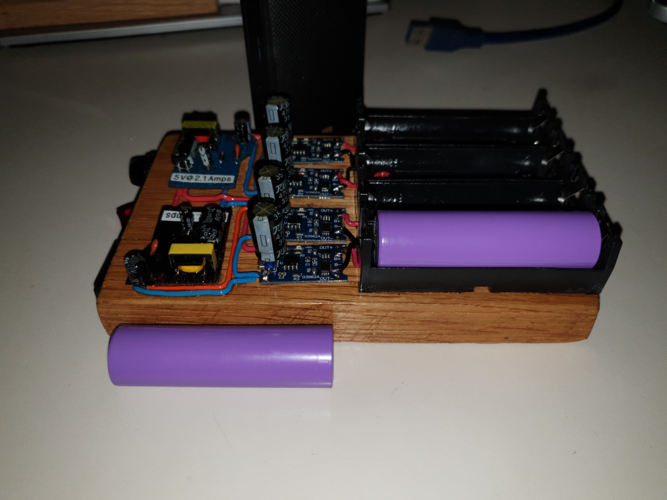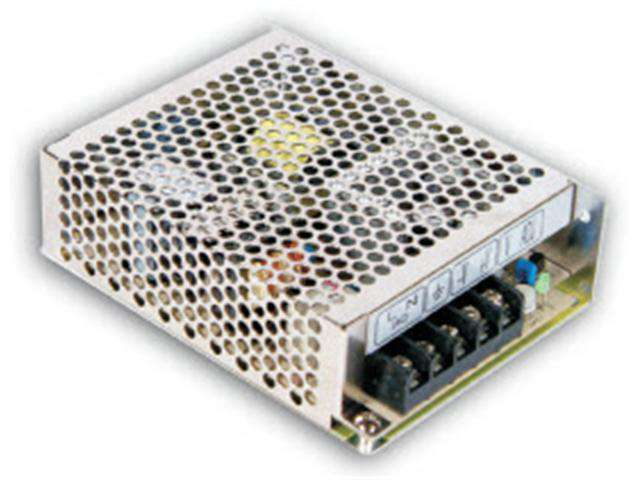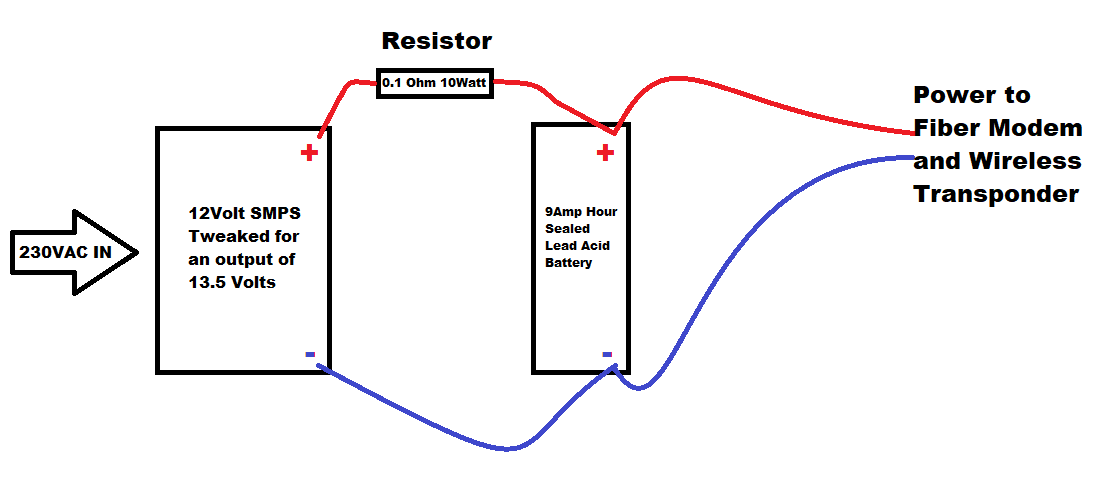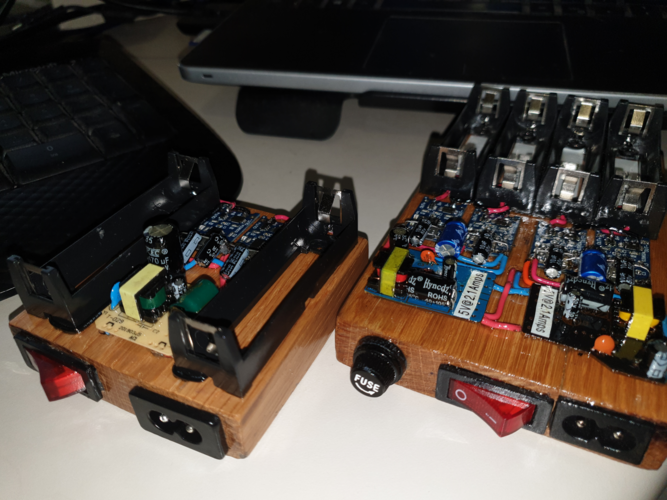I’ve used the TP4056 a number of times to repair forum members failed Li-Ion Chargers, and decided to build a fast?(ish) charger from scratch with an “Old School” / Steam Punk theme.
The TP4056 Modules are available from Mantech for a little more than ten bucks, and I added in two “Chinatown“ 2.1 Amp Cell Phone Chargers, (disassembled to maintain the exposed / old school look), a piece of oak, a stove switch, a “figure 8” mains socket, four 18650 battery holders, and a fuse holder, probably adding another fifty bucks to the total project cost.
As this charger has exposed electrical connections, I “hid” most of the 230Volt wiring within the wood, and … only used fireproof silicone insulated wiring, however the exposed boards got a few coats of a clear insulating lacquer for additional safety.
The finished charger did reveal some fairly formidable statistics to …
I tested it using, (discharged to 2.75 Volts), Howell HWE4621 Cells, (as I still have their test data), and … the charger does a great Constant Current to Constant Voltage charge, albeit that the changeover from CV to CV is a bit “soft”, (this does increase charge time marginally), however if anything, it’s arguably better for battery longevity. The charger is also a tad below the 1A claimed current spec. coming in at 950mA. The CV voltage however was bang on, at 4.2 Volts, (in spite of the datasheet specifying between 4.137 and 4.263 volts). This chip also uses the industry accepted methodology of 1/10 of the initial charge current as termination current, (confirmed), and … has built in thermal protection.
As everything is exposed, the circuit and the cells remained relatively cool … the physical TP4056 IC did come close to 68 degrees C in the early stages of charging, however this is well within specification, and the cells temperature peaked on a cool 26 degrees C … just as the changeover from constant current to constant voltage occurred.
The TP4056 also has what the manufacturer refers to as a trickle charge feature, which is more of a “resurrect the dead” feature, in that any cell below 2.5Volts is first trickle charged until it reaches 2.5Volts, and then the pre-programmed CC to CV cycle goes ahead.
A word of warning … these modules DO NOT have reverse polarity protection, (you don’t put batteries into your charger back to front, do you? ), but … you can add the circuit included below if you want peace of mind.
), but … you can add the circuit included below if you want peace of mind.
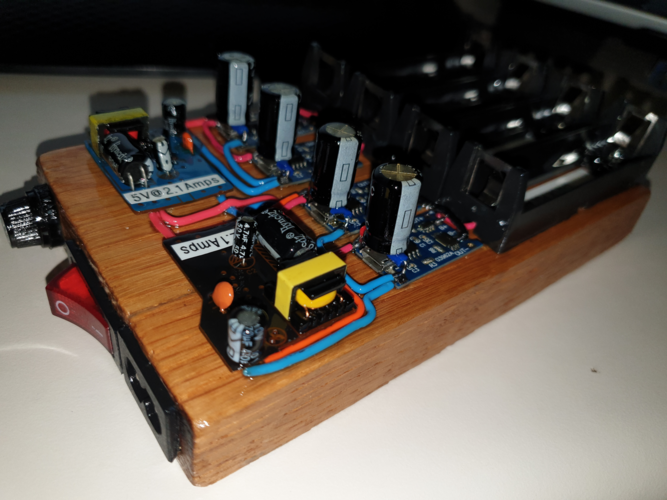
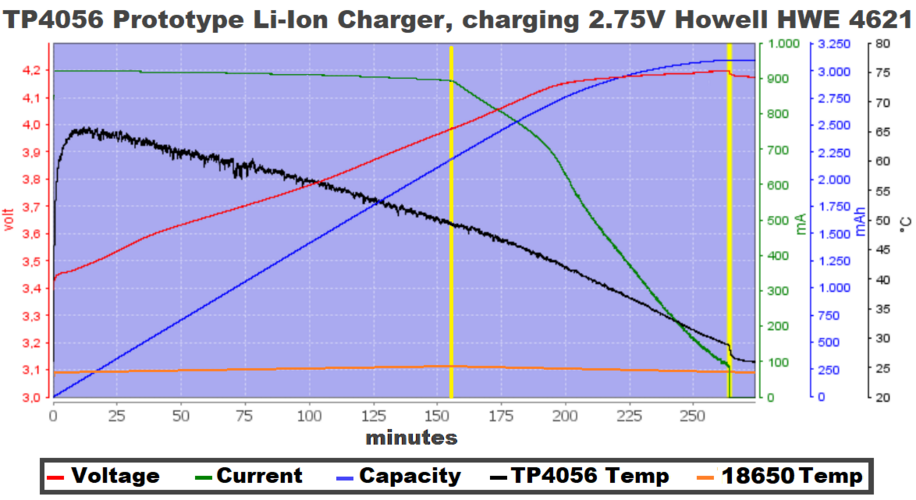
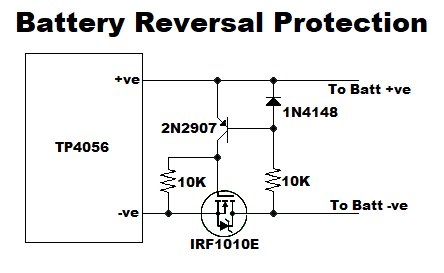
The TP4056 Modules are available from Mantech for a little more than ten bucks, and I added in two “Chinatown“ 2.1 Amp Cell Phone Chargers, (disassembled to maintain the exposed / old school look), a piece of oak, a stove switch, a “figure 8” mains socket, four 18650 battery holders, and a fuse holder, probably adding another fifty bucks to the total project cost.
As this charger has exposed electrical connections, I “hid” most of the 230Volt wiring within the wood, and … only used fireproof silicone insulated wiring, however the exposed boards got a few coats of a clear insulating lacquer for additional safety.
The finished charger did reveal some fairly formidable statistics to …
I tested it using, (discharged to 2.75 Volts), Howell HWE4621 Cells, (as I still have their test data), and … the charger does a great Constant Current to Constant Voltage charge, albeit that the changeover from CV to CV is a bit “soft”, (this does increase charge time marginally), however if anything, it’s arguably better for battery longevity. The charger is also a tad below the 1A claimed current spec. coming in at 950mA. The CV voltage however was bang on, at 4.2 Volts, (in spite of the datasheet specifying between 4.137 and 4.263 volts). This chip also uses the industry accepted methodology of 1/10 of the initial charge current as termination current, (confirmed), and … has built in thermal protection.
As everything is exposed, the circuit and the cells remained relatively cool … the physical TP4056 IC did come close to 68 degrees C in the early stages of charging, however this is well within specification, and the cells temperature peaked on a cool 26 degrees C … just as the changeover from constant current to constant voltage occurred.
The TP4056 also has what the manufacturer refers to as a trickle charge feature, which is more of a “resurrect the dead” feature, in that any cell below 2.5Volts is first trickle charged until it reaches 2.5Volts, and then the pre-programmed CC to CV cycle goes ahead.
A word of warning … these modules DO NOT have reverse polarity protection, (you don’t put batteries into your charger back to front, do you?






